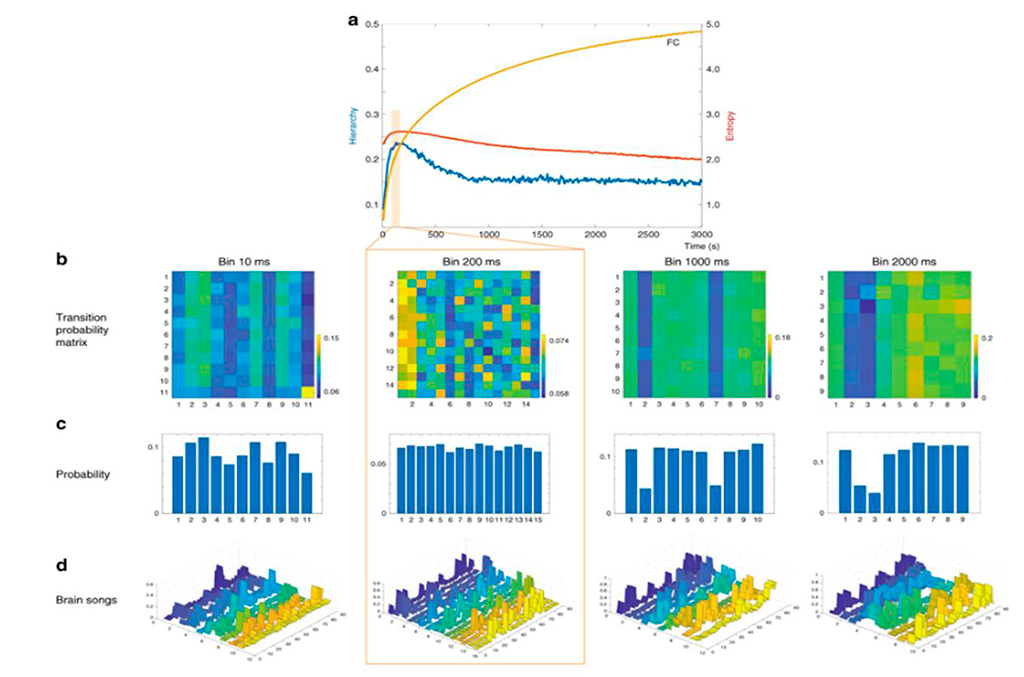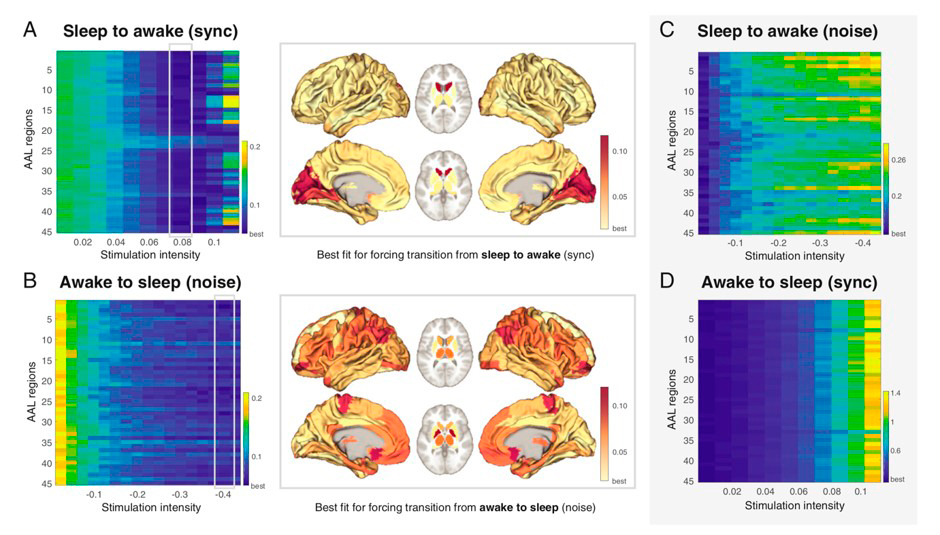How quickly do we become conscious of signals in the environment? The study of Reference 1 significantly advances our understanding of the timescale activity of whole-brain dynamics. The new framework, poetically called brain songs, sheds new light on the whole-brain networks involved in broadcasting information at this fast timescale. As such it supports and extends current accounts of when information becomes consciously available in the human brain. More generally, brain songs could be used to understand why the timescale of conscious processing changes in some diseases and as such the new findings could have important implications for understanding changes in neuropsychiatric disease – and perhaps even the nature of consciousness”.
How to force the transition from one brain state to another, for example, from sleep to wakefulness? The study of Reference 2 provides a reliable and robust definition that characterizes brain states and which, in combination with the complete computational model of the human brain, allows the systematic study of the effects of brain stimulation in the transition from one brain state to another. The study results demonstrate the usefulness of the model for discovering where to stimulate in order to force the transition between brain states. Applied to psychiatric diseases, this method may enhance recovery from the disease.
Reference

